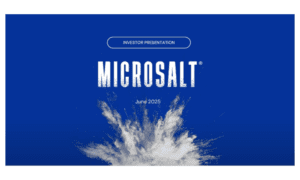During the COVID-19 pandemic, up to 70% of Americans increased their consumption of frozen meals, which are often higher in sodium than people realize. Creating more consumer-friendly labels can help people make healthier choices at the supermarket. Here’s how.
Key Takeaways:
- Over 130 million Americans will be consuming frozen meals by 2024
- Frozen meals are usually high in sodium
- Consumers are aware of the link between nutrition and disease
- Consumers want to be able to understand food labels better
- Food manufacturers can help consumers understand food labels and hence make healthier food choices
Frozen foods have become increasingly popular in recent years, not just because we were all stuck at home during the COVID-19 pandemic, but because in our fast-paced, Wi-Fi world, families just don’t have as much time to sit down to fresh, homemade meals anymore. So the trend toward packaged and processed foods is certainly understandable. But is it safe?
Over 70% of Americans’ dietary sodium comes from packaged and prepared foods. That might not be so bad if we didn’t also consume far too much sodium to begin with – on average more than twice the amount we should be eating. Diets higher in sodium are associated with an increased risk of developing high blood pressure and other serious illnesses, so adding more processed, frozen foods to our already sodium-laden diets isn’t such a great idea.
The good news is that Americans are becoming increasingly aware of the relationship between diet and disease. This means that most adults scrutinize ingredients before purchasing frozen foods to determine whether they’re healthy. So it’s up to food manufacturers to ensure that their product labels are consumer-friendly and easy to interpret.
What are food labels?
Food labels, also referred to as nutrition labels, have existed in the United States since 1990. They simply state the ingredients in a food product in descending order – the highest quantity ingredient will be at the top while the lowest sits at the bottom.
What is a sodium label?
A sodium label refers to the part of the food label that lists sodium as an ingredient. Sodium can be listed using different terms. Most food labels will list sodium as monosodium glutamate (MSG). It may also be listed as sodium alginate, sodium citrate, or sodium phosphate.
Most Americans struggle to decode food labels
Most consumers aren’t chemists or nutritionists, so they likely have no idea what MSG is nor what the daily recommended amount of sodium should be. So it’s important for food manufacturers to make sure that consumers can get the information they need from product labels.
Manufacturers can help consumers make healthier food choices
Most food labels provide accurate measurements of the ingredients that make up the product. A study showed that only about 4% of food labels were misleading or non-compliant. So the problem isn’t that labels are intentionally misleading – they’re just difficult to understand. And that’s why food manufacturers need to create labels that are not only accurate but easily comprehensible.
Paying attention to food labels and making sure you truly understand them can lead you to healthier food choices for yourself and your family. Look not only at the ingredients but also the amounts of recommended daily allowance, when possible, to ensure you’re not exceeding these important limits.
Consumer-friendly frozen food labels
Manufacturers are required to include food labels on a majority of foods and beverages. Consumers are eager to scrutinize these labels to help them make healthy food choices. Here are three things manufacturers can do to help consumers make sense of what appears on frozen food labels.
Clean labeling
Clean labeling is an emerging trend that’s gaining popularity with health-conscious consumers. The general principle of clean labeling is to have shorter and simpler ingredient lists that do not include chemicals or synthetics. Clean labels feature tags such as “no preservatives added” or “free from artificial colors and flavors.” A report by Nielsen showed that about 90% of U.S. households have purchased a clean label product.
Using absolute values or percentages
Absolute values or percentages are easier to recall and understand. One study evaluated the qualities and characteristics that facilitate consumers’ understanding of food labels. The researchers compared descriptions versus absolute and percentage measures. They found that consumers were more likely to use labels to guide their purchasing decisions when the labels included absolute and percentage values.
Use standard benchmarks
The study mentioned above further investigated the use of standard benchmarks in food labels. Consumers may understand that they need to limit their sodium intake, but they may not understand just how much sodium they should consume in a day or a meal. Standard benchmarks can help consumers make sense of sodium values in a food label and determine whether the choice is appropriate.
Those three factors can help demystify consumers’ frozen food labels. Of course, decoding the label is just the first step. Consumers also need to use that information to keep their sodium intake in check.
3 ways consumers can reduce their sodium intake from frozen foods
It is okay to consume some frozen foods once you’ve figured out how to read the labels. Here are three extra tips to help you make healthier frozen food choices.
Understand the use of “servings” on food labels
Most food labels list the sodium content per serving, not per package. The catch is that a packet of frozen food may contain several servings. It’s important to understand the number of servings in each package and use this to determine how much sodium you will be consuming.
Avoid food labels with chemicals and synthetics
While you may not be able to prepare fresh homemade meals, you can improve your dietary choices by avoiding frozen foods that contain added chemicals. This means opting for organically grown foods and processed foods with no chemical preservatives or added flavors.
Go for fresh frozen
Fresh-frozen meals are a clear winner as they afford you both the benefit of convenience and the benefits of fresh meals. The only drawback is that they may not last as long as preserved meals, so you need to prepare them soon after purchase.
With more consumers turning to frozen foods, manufacturers are at pains to provide suitable options for the growing class of health-conscious consumers.
Following these tips is a good step in the right direction toward choosing healthier pre-packaged frozen foods. Adhere to serving guidelines, be on the lookout for potentially harmful additives, and opt for fresh-frozen to get the most out of your frozen meals.
MicroSalt® can help food manufacturers ace the food label test
More and more consumers are looking to decrease their sodium intake but aren’t willing to compromise on taste. How can food manufacturers strike a balance?
MicroSalt® minute salt particles have been uniquely designed to offer the full flavor of salt with 50% less sodium. This means that most Americans will be in the safe bracket without having to “retrain their taste buds” to accept blander food. This is the ultimate solution for acing the food label test.
The MicroSalt® team strives to create a new food industry norm where good health doesn’t come second to great taste. MicroSalt® are proud global winners of the P&G Alumni Network’s 2021 Star Entrepreneur Award. We’d love to take part in making your product the best it can be.
Contact us via our message page, connect with one of our international offices, or call (877) 825-0655 to learn more.




